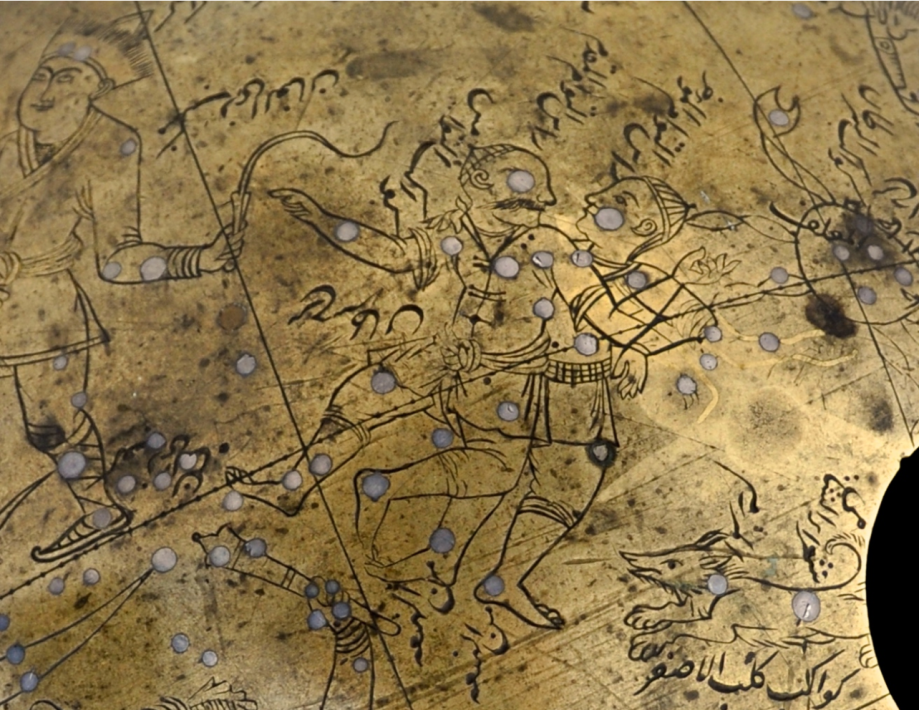
According to Emilie Savage-Smith, the twins, which Aratus called δίδυμοι, were identified by later mythographers with various pairs including Apollo and Heracles, and Castor and Pollux. The latter were the most affectionate of all brothers and were placed in the heavens as a record of unselfish friendship. The myth of Castor and Pollux gave rise to the modern names for the two most prominent stars in the constellation. The twins were described in Greek literature as one having his arms around the other, as they appear on the Manuchihr globe. The constellation of the twins seems to go back to Babylonian texts.
The constellation on the Manuchihr globe is titled kawākib al-taw’amayn (the constellation of the twins). Al-Ṣūfī employed the name al-taw’amayn (the two twins) for the constellation instead for al-jawzā’. This name is the Arabic translation of the Ptolemaic δίδυμοι (twins). However, later astronomers returned to the early Bedouin name for the region (al-jawzā’) for the name of the constellation as well as the corresponding zodiacal house. The meaning of al-jawzā’ is somewhat obscure and probably comes from a root meaning “pair” and is the traditional Bedouin name for the region, as al-Biruni notes. The name al-jawzā’ possibly referred to a large feminine figure envisioned in this region of the heavens in pre-Islamic Arabia.
Gemini is composed of 18 formed stars and seven unformed ones. Of the unformed ones. Over the head of the westernmost twin reads the label ra’s al-taw’am al-muqaddam (the head of the foremost twin), referring to the first star, the one in the forehead [α Geminorum, Castor]. The star in the face of the eastern twin is labeled ra’s al-taw’am al-mu’akhkhar (the head of the rear twin), the second star of the constellation [β Gem, Pollux]. Both labels reflect the Ptolemaic constellation image. Moreover, each of the two stars in the two feet of the eastern twin [γξ Gem] is labeled with the Bedouin name min al-han‘ah (of al-han‘ah). This term is also the name of the sixth lunar mansion and gave rise to the modern name for the star γ Gem, Alhena.